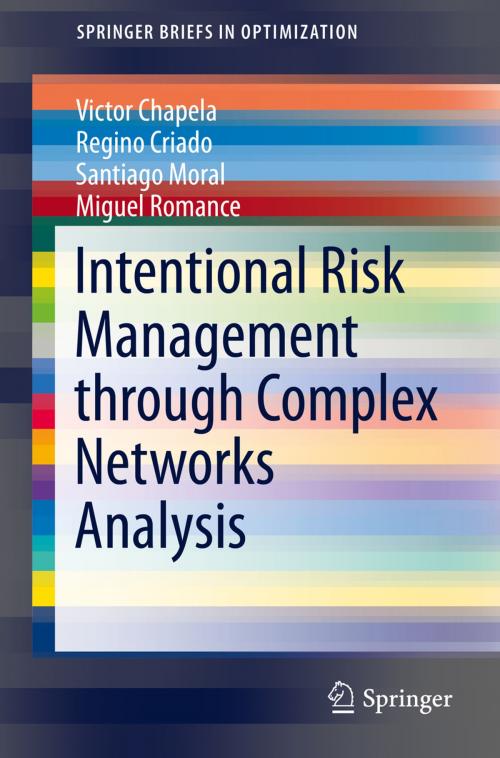Intentional Risk Management through Complex Networks Analysis
Nonfiction, Science & Nature, Mathematics, Calculus, Business & Finance, Economics, Theory of Economics| Author: | Victor Chapela, Regino Criado, Santiago Moral, Miguel Romance | ISBN: | 9783319264233 |
| Publisher: | Springer International Publishing | Publication: | December 14, 2015 |
| Imprint: | Springer | Language: | English |
| Author: | Victor Chapela, Regino Criado, Santiago Moral, Miguel Romance |
| ISBN: | 9783319264233 |
| Publisher: | Springer International Publishing |
| Publication: | December 14, 2015 |
| Imprint: | Springer |
| Language: | English |
This book combines game theory and complex networks to examine intentional technological risk through modeling. As information security risks are in constant evolution, the methodologies and tools to manage them must evolve to an ever-changing environment. A formal global methodology is explained in this book, which is able to analyze risks in cyber security based on complex network models and ideas extracted from the Nash equilibrium. A risk management methodology for IT critical infrastructures is introduced which provides guidance and analysis on decision making models and real situations. This model manages the risk of succumbing to a digital attack and assesses an attack from the following three variables: income obtained, expense needed to carry out an attack, and the potential consequences for an attack. Graduate students and researchers interested in cyber security, complex network applications and intentional risk will find this book useful as it is filled with a number of models, methodologies and innovative examples.
This book combines game theory and complex networks to examine intentional technological risk through modeling. As information security risks are in constant evolution, the methodologies and tools to manage them must evolve to an ever-changing environment. A formal global methodology is explained in this book, which is able to analyze risks in cyber security based on complex network models and ideas extracted from the Nash equilibrium. A risk management methodology for IT critical infrastructures is introduced which provides guidance and analysis on decision making models and real situations. This model manages the risk of succumbing to a digital attack and assesses an attack from the following three variables: income obtained, expense needed to carry out an attack, and the potential consequences for an attack. Graduate students and researchers interested in cyber security, complex network applications and intentional risk will find this book useful as it is filled with a number of models, methodologies and innovative examples.















